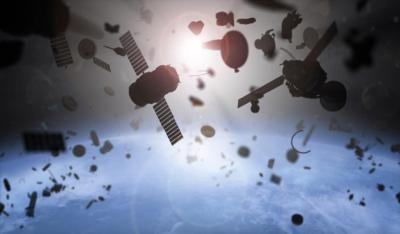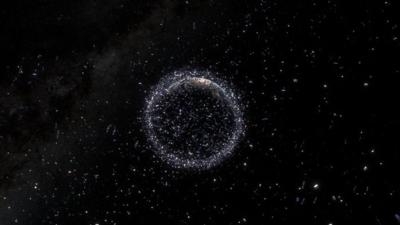Fri, Nov 26, 2021
“A Workable Strategy” for Eliminating Space Debris
An Embry-Riddle Aeronautical University professor and his co-inventors patented a workable, functional solution to the prevention of spaceborne debris accumulation. Named the Drag De-Orbit Device, or D3, the system is designed to guide small satellites out of Earth orbit into the atmosphere where they burn up in re-entry. The increased usage of private and commercial satellites, even smaller ones for cheap research experiments, presents an ongoing risk for all

orbital equipment. High-speed space flotsam can function similar to buckshot circling the globe, blocking off orbital stations or tracks from future use.
The inventor, Dr. Riccardo Bevilacqua, a professor of Aerospace Engineering at the university, saying “The D3 helps solve the problem of space debris by safely steering the atmospheric re-entry and demise of low-Earth orbit spacecraft.” His work piqued the interest of Orbotic Systems, a space debris specialist, and led to their licensing of his tech. “We are confident we will see the D3 attracting the attention of the private sector, given future plans on injecting thousands of small spacecraft into low orbits — for Earth observation, providing global internet and much more,” he said. “I would expect things to ramp up in the next five years or less.”

The D3 is a 10 by 10 by 5 centimeter system that mounts on the back of a satellite to connect with its flight control system. Using independently deployable and retractable booms, it can adjust its incoming trajectory while returning to earth, skimming the atmosphere so it can create a de-orbit track away from populated areas. It can double as a collision avoidance maneuvering system while in space, a bonus for satellite designers hoping for more control over their systems even after their deployment.
Bevilacqua and graduate student Nicolo Woodward will begin the integration of new electronics into the system in preparation for test flights beginning in late spring 2022.
More News
Pilot Also Reported That Due To A Fuel Leak, The Auxiliary Fuel Tanks Were Not Used On June 4, 2025, at 13:41 eastern daylight time, a Piper PA-23, N2109P, was substantially damage>[...]
Have A Story That NEEDS To Be Featured On Aero-News? Here’s How To Submit A Story To Our Team Some of the greatest new stories ANN has ever covered have been submitted by our>[...]
From 2023 (YouTube Edition): Reflections on War’s Collective Lessons and Cyclical Nature The exigencies of war ought be colorblind. Inane social-constructs the likes of racis>[...]
Aero Linx: Colorado Pilots Association (CPA) Colorado Pilots Association was incorporated as a Colorado Nonprofit Corporation in 1972. It is a statewide organization with over 700 >[...]
High Speed Taxiway A long radius taxiway designed and provided with lighting or marking to define the path of aircraft, traveling at high speed (up to 60 knots), from the runway ce>[...]
 NTSB Prelim: Piper PA-23
NTSB Prelim: Piper PA-23 ANN FAQ: Submit a News Story!
ANN FAQ: Submit a News Story! Classic Aero-TV: One Mans Vietnam
Classic Aero-TV: One Mans Vietnam ANN's Daily Aero-Linx (07.03.25)
ANN's Daily Aero-Linx (07.03.25) ANN's Daily Aero-Term (07.03.25): High Speed Taxiway
ANN's Daily Aero-Term (07.03.25): High Speed Taxiway




